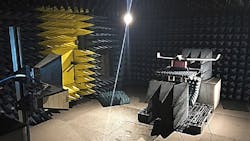Verus Research Stops UAS with Microwaves
The U.S. Army has signed Verus Research to a one-year, $450,000 task project to develop high-power-microwave (HPM) weapons capable of battling unmanned aerial systems (UAS). The task project is in addition to an existing test and evaluation non-kinetic (TEN-K) contract to enhance directed energy system-placement analysis (DESPA) capability for testing and analysis of directed energy technology based on HPM sources. Verus Research’s electromagnetic interactive tool for test and evaluation of radio-frequency systems (EMITTERS) will help determine the viability of different counter-UAS efforts based on HPM directed-energy weapons.
Grady Patterson, chief executive officer (CEO) of Verus Research (Albuquerque, NM), said: “We are honored to perform this new work under our existing agreement with the U.S. Army to provide quick reaction capabilities that will address threats posed by opposing unmanned aircraft systems.” Patterson added: “As HPM systems begin to make their way into the battlespace, it will be increasingly important to quickly assess how well these systems will perform and identify any hazards they may pose. The solutions that we create will absolutely matter because they will be key to ensuring safe and effective operation of these new systems.”
Through testing, Verus Research will use EMITTERS to create three-dimensional (3D) views of the outdoor effects of HPM weapons based on predefined operating conditions and scenarios (see the figure). The testing will help determine collateral damage and hazard zones resulting from the use of HPM weapons.
About the Author
Jack Browne
Technical Contributor
Jack Browne, Technical Contributor, has worked in technical publishing for over 30 years. He managed the content and production of three technical journals while at the American Institute of Physics, including Medical Physics and the Journal of Vacuum Science & Technology. He has been a Publisher and Editor for Penton Media, started the firm’s Wireless Symposium & Exhibition trade show in 1993, and currently serves as Technical Contributor for that company's Microwaves & RF magazine. Browne, who holds a BS in Mathematics from City College of New York and BA degrees in English and Philosophy from Fordham University, is a member of the IEEE.
